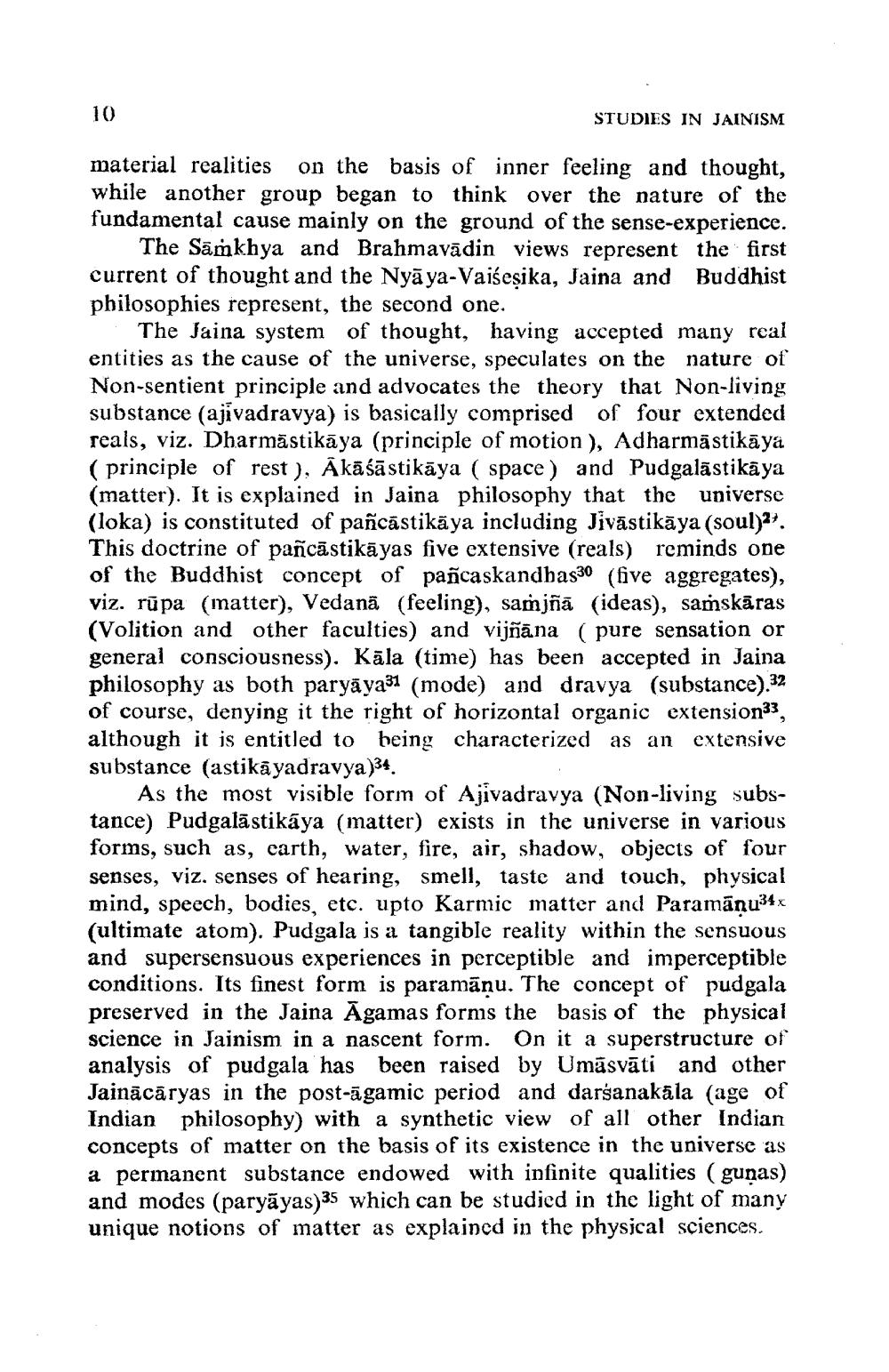________________
10
STUDIES IN JAINISM
material realities on the basis of inner feeling and thought, while another group began to think over the nature of the fundamental cause mainly on the ground of the sense-experience.
The Samkhya and Brahmavādin views represent the first current of thought and the Nyāya-Vaiseșika, Jaina and Buddhist philosophies represent, the second one.
The Jaina system of thought, having accepted many real entities as the cause of the universe, speculates on the nature of Non-sentient principle and advocates the theory that Non-living substance (ajívadravya) is basically comprised of four extended reals, viz. Dharmāstikāya (principle of motion ), Adharmāstikāya (principle of rest ), Ákāśāstikāya ( space) and Pudgalāstikāya (matter). It is explained in Jaina philosophy that the universe (loka) is constituted of pañcâstikāya including Jivāstikāya (soul). This doctrine of pañcāstikāyas five extensive (reals) reminds one of the Buddhist concept of pañaskandbas30 (five aggregates), viz. rūpa (matter), Vedanā (feeling), samiñā (ideas), samskāras (Volition and other faculties) and vijñāna (pure sensation or general consciousness). Kāla (time) has been accepted in Jaina philosophy as both paryāya31 (mode) and dravya (substance).32 of course, denying it the right of horizontal organic extension33, although it is entitled to being characterized as an extensive substance (astikāyadravya 34.
As the most visible form of Ajivadravya (Non-living substance) Pudgalāstikaya (matter) exists in the universe in various forms, such as, carth, water, fire, air, shadow, objects of four senses, viz. senses of hearing, smell, taste and touch, physical mind, speech, bodies, etc. upto Karmic matter and Paramānu34x (ultimate atom). Pudgala is a tangible reality within the sensuous and supersensuous experiences in perceptible and imperceptible conditions. Its finest form is paramāņu. The concept of pudgala preserved in the Jaina Āgamas forms the basis of the physical science in Jainism in a nascent form. On it a superstructure of analysis of pudgala has been raised by Umāsvāti and other Jainācāryas in the post-āgamic period and darśanakala (age of Indian philosophy) with a synthetic view of all other Indian concepts of matter on the basis of its existence in the universe as a permanent substance endowed with infinite qualities (gunas) and modes (paryāyas)35 which can be studied in the light of many unique notions of matter as explained in the physical sciences.




